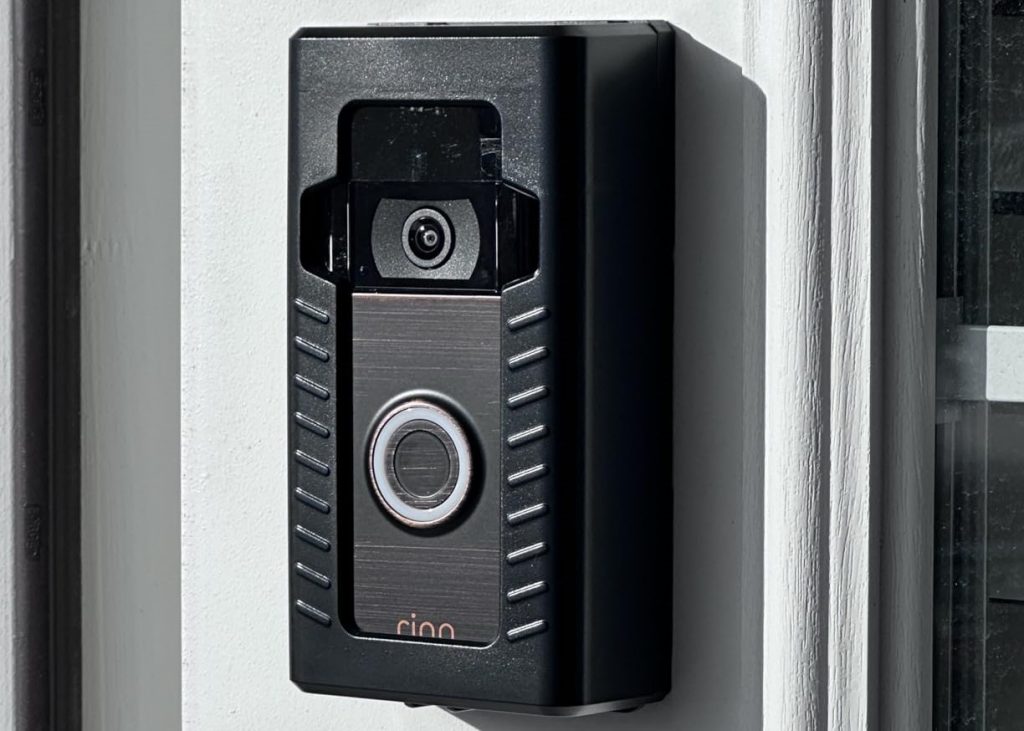Key Takeaways
- Ring Doorbells use 10-20 watts per month.
- Ring Floodlight Cam consumes around 24 watts.
- Ring Chime uses just 0.63 watts.
- Alarm Base Station consumes about 12.4 watts.
Curious about your Ring Doorbell power consumption? Whether you’re planning to install a new one or already have one, this guide covers its energy use and tips for efficiency.
Do Ring Devices Use A Lot Of Electricity?
No, Ring devices use minimal electricity. Most Ring Doorbells and Cameras operate on low power, typically consuming between 2-5 watts when active. Their energy-efficient design ensures that they don’t significantly impact your electricity bill.
For further savings, wired models draw continuous, low power, while battery-operated versions only use power when recording or detecting motion.
What Is the Average Ring Doorbell Power Consumption?
The average power consumption of a Ring Doorbell is quite low. Generally, wired Doorbells consume between 2 to 5 watts when actively recording or streaming. In standby mode, power usage drops even further to around 0.5 to 1 watt. So, on average, a Ring Doorbell will consume about 10-20 watts of power per month.

Battery-powered models mainly use power during motion, recording, or streaming, with minimal overall consumption. They can last 6 to 12 months per charge, but the battery may need replacing if damaged or worn out.
So, overall, Ring Doorbell power consumption is much less than most household appliances or or even leaving a light bulb on for an extended period.
How Much Electricity Does a Ring Camera Use Per Month?
A Ring Camera typically uses around 2 to 5 watts of power when active. Over a month, this translates to approximately 15 to 35 watt-hours per day, depending on activity levels, which adds up to about 450 to 1,050 watt-hours (or 0.45 to 1.05 kWh) per month. This is a very low electricity usage overall.
Ring Cameras are energy-efficient, using minimal electricity. Wired models draw low power continuously, while battery versions use energy only during motion or recording, similar to an LED light.
How Much Power Does Ring Floodlight Use?

The Ring Floodlight uses around 20 to 24 watts of power when the lights and camera are both active. When in standby mode, its power consumption drops significantly, as the camera and sensors use only a small amount of electricity. This efficient design keeps overall power usage low, even with regular motion-activated lighting.
Ring Floodlights operate on 110 to 240 volts and use up to 24 watts of power, translating to 0.1 to 0.218 amps. Despite their bright 2,000-lumen output, the power consumption remains low, offering effective security and light with minimal energy usage.
How Much Is Ring Chime Power Consumption?

The Ring Chime typically consumes just about 0.63 watts of power during operation. Its low energy usage makes it an efficient addition to your Ring setup, with minimal impact on your electricity bill. Even when plugged in continuously, the Ring Chime’s power consumption remains very low, making it cost-effective to run long-term.
What Is the Ring Alarm Base Station Power Consumption?
The Ring Alarm Base Station typically consumes between 12.4 watts and 24 watts, as measured by users. This consumption translates to approximately 0.3 to 0.58 kWh per day. However, the actual power usage can vary depending on factors like the number of connected devices and system activity.
Plus, the base station includes a battery backup that can last up to 24 hours during a power outage, ensuring continuous security operations even when the main power is unavailable.

Easy Ways to Save Energy With Your Ring Devices
Want to make sure your Ring devices are running efficiently? These simple tips can help reduce energy usage while keeping your home secure.
1. 🌞 Choose Solar-Powered Options

Solar-powered Ring devices provide a sustainable, energy-efficient option by using solar energy to charge, reducing waste and ensuring a continuous power supply.
Here are all the Ring Doorbells and Cameras that can work with solar power:
2. 🛠️ Optimize Motion Settings
Reduce the sensitivity of your device’s motion sensors to prevent unnecessary recordings and alerts. This will reduce the amount of active time and save energy. To do so:
- Open the Ring app.
- Select your device.
- Go to Motion Settings.
- Adjust the sensitivity slider to a lower setting to decrease motion detection frequency.
3. ⏲️ Use Scheduling
If your Ring device supports scheduling features, program it to disable motion alerts during times you don’t need monitoring, like when you’re at home. Here’s how to do it:
- In the Ring app, select your device.
- Tap on Motion Settings > Motion Schedule.
- Set up specific times when you don’t need motion alerts, such as when you are usually home.
4. 🎥 Adjust Video Settings
Lower the resolution of the video feed. While this might reduce image quality slightly, it decreases the power consumption significantly. Here’s how to reduce the video resolution in Ring:
- Access the device settings in the Ring app.
- Select Video Settings.
- Choose a lower resolution or bitrate to reduce power usage.
5. 👤 Enable Smart Alerts
Choose smart alert settings that differentiate between people and other motions. This feature reduces unnecessary activations and saves energy. Here’s how to enable it:
- Go to the device settings in your Ring app.
- Tap Smart Alerts or People Only Mode.
- Enable the feature to minimize alerts from non-human movements.
6. 🔄 Keep Firmware Up-to-Date
Keep your Ring devices updated. Firmware updates often include optimizations that can improve energy efficiency. Check for updates regularly in the Ring app under Device Settings. If an update is available, ensure your device is connected to power and tap Update.
7. 📶 Monitor Wi-Fi Connection
Ensure a strong Wi-Fi connection. A poor connection can cause your devices to work harder to communicate, increasing power usage. To keep a strong and stable connection:
- Place your router centrally to ensure a strong signal throughout your home.
- Check the RSSI value in your device’s Device Health to verify a good connection.
- Consider a Wi-Fi extender if your device consistently shows a poor signal.
8. 🔍 Check Device Health Regularly
Use the Ring app’s Device Health tool to check for any issues that might be causing higher power usage, like signal interference or hardware problems. To do so:
- Open the Ring app and select your device.
- Go to Device Health to check battery level, signal strength, and general performance.
- Address any alerts or recommendations provided in this section
9. 🛡️ Protect From Harsh Weather Conditions

If your Ring Camera or Ring Doorbell is in direct sunlight or facing extreme temperatures, they might use more energy. Here’s how to prevent that:
- Install a weather-resistant cover or hood over your Ring doorbell.
- Choose a location that offers some natural protection, like under an eave or porch roof.
- Ensure the cover doesn’t block the camera or sensors.
- Regularly check and clean the device to remove any debris or buildup that could affect its efficiency.
Optimize Your Ring Doorbell Power Consumption
In my experience, the Ring Doorbell power consumption is very low and it’s an energy-efficient device, using just 10-20 watts per month. If you’re concerned about power usage, solar-powered options are available for added efficiency.
Here are a few more posts you might find interesting:
- If your Ring Doorbell battery dies quickly, lower motion sensitivity, set motion zones, keep it updated, and ensure weather protection.
- Ring Floodlight stays on for 30 seconds to 15 minutes with motion or continuously in Continuous Mode.
- Ring Floodlight Cam bulb replacement may be necessary if its light is getting dim or starting to flicker.
Frequently Asked Questions
What are Ring camera power requirements?
For instance, the Ring Floodlight Cam consumes about 24 watts, indicating it’s one of the higher power-consuming devices in the Ring lineup. Despite the variations, Ring cameras are designed to be energy efficient, ensuring they don’t significantly impact your electricity bill.










